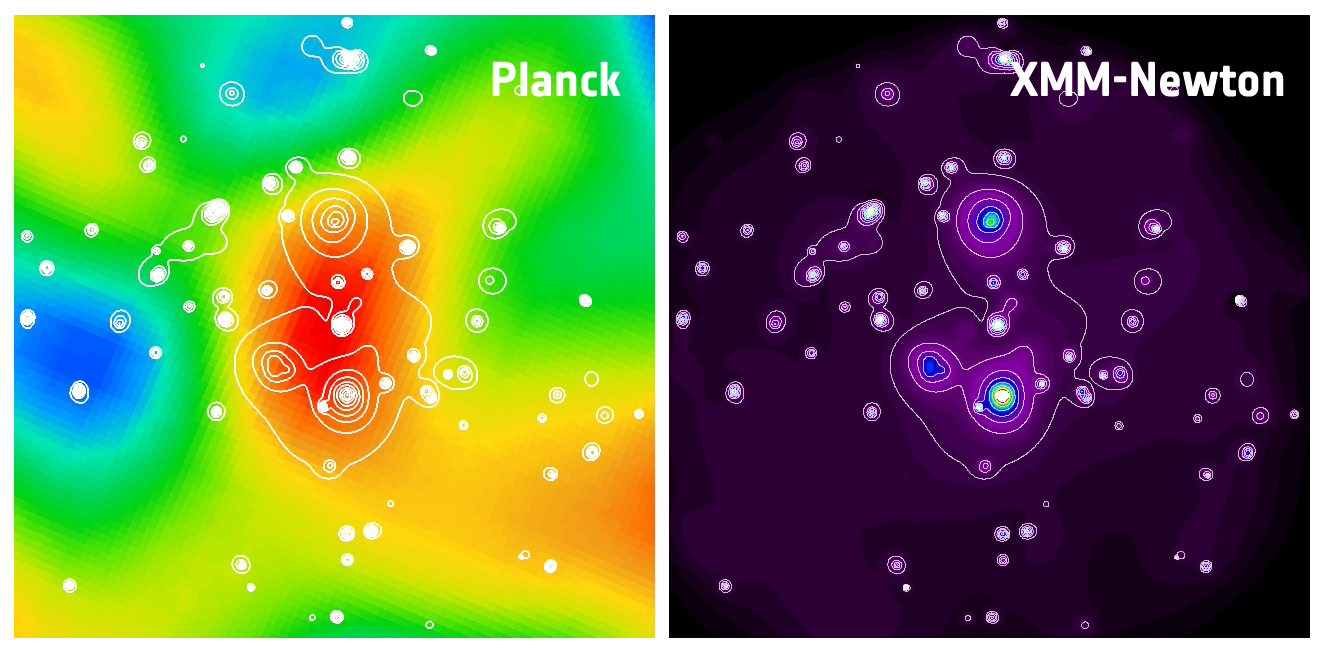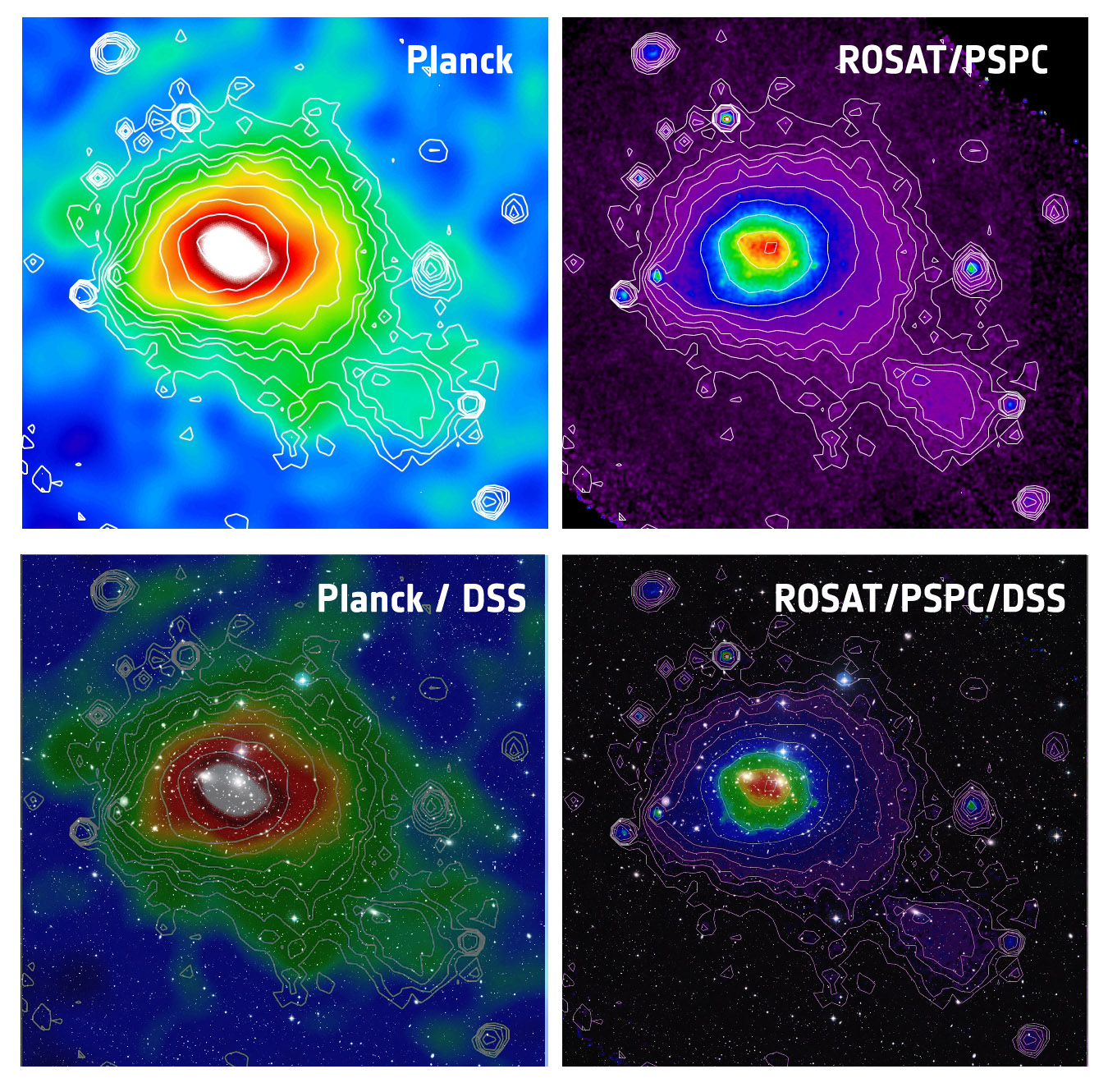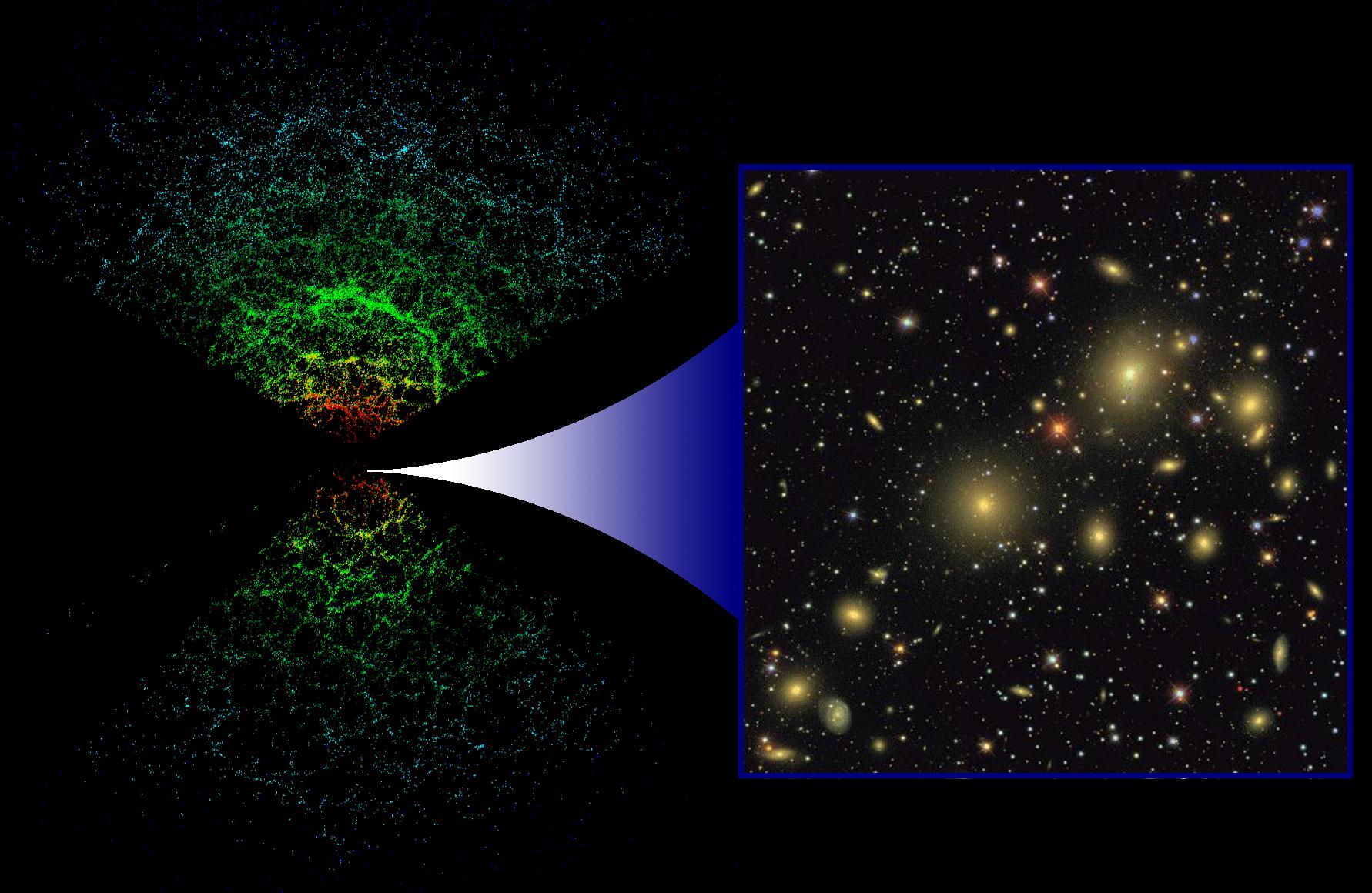Universe Today | Cosmology, Galaxies | 15 Sept 2010
A new supercluster, seen by Planck and XMM-NewtonScanning the sky in microwaves, the Planck mission has obtained its very first images of galaxy clusters, and found a previously unknown supercluster which is among one of the largest objects in the Universe. The supercluster is having an effect on the Cosmic Microwave Background, and the observed distortions of the CMB spectrum are used to detect the density perturbations of the universe, using what is called the Sunyaev–Zel’dovich effect (SZE). This is the first time that a supercluster has been discovered using the SZE. In a collaborative effort, the XMM Newton spacecraft has confirmed the find in X-rays.
Sunyaev-Zel’dovich Effect (SZE) effect describes the change of energy experienced by CMB photons when they encounter a galaxy cluster as they travel towards us, in the process imprinting a distinctive signature on the CMB itself. The SZE represents a unique tool to detect galaxy clusters, even at high redshift. Planck is able to look across nine different microwave frequencies (from 30 to 857 GHz) to remove all sources of contamination from the CMB, and over time, will provide what is hoped to be the sharpest image of the early Universe ever.
“As the fossil photons from the Big Bang cross the Universe, they interact with the matter that they encounter: when travelling through a galaxy cluster, for example, the CMB photons scatter off free electrons present in the hot gas that fills the cluster,” said Nabila Aghanim of the Institut d’Astrophysique Spatiale in Orsay, France, a leading member of the group of Planck scientists investigating SZE clusters and secondary anisotropies. “These collisions redistribute the frequencies of photons in a particular way that enables us to isolate the intervening cluster from the CMB signal.”
Since the hot electrons in the cluster are much more energetic than the CMB photons, interactions between the two typically result in the photons being scattered to higher energies. This means that, when looking at the CMB in the direction of a galaxy cluster, a deficit of low-energy photons and a surplus of more energetic ones is observed.
The SZE signal from the newly discovered supercluster arises from the sum of the signal from the three individual clusters, with a possible additional contribution from an inter-cluster filamentary structure. This provides important clues about the distribution of gas on very large scales which is, in turn, crucial also for tracing the underlying distribution of dark matter.
“The XMM-Newton observations have shown that one of the candidate clusters is in fact a supercluster composed of at least three individual, massive clusters of galaxies, which Planck alone could not have resolved,” said Monique Arnaud, who leads the Planck group following up sources with XMM-Newton.
“This is the first time that a supercluster has been discovered via the SZE,” said Aghanim. “This important discovery opens a brand new window on superclusters, one which complements the observations of the individual galaxies therein.”
ESA Science & Technology | 15 Sept 2010
The Coma clusterThis image shows the newly discovered supercluster of galaxies detected by Planck (with the Sunyaev-Zel'dovich Effect) and XMM-Newton (in X-ray emission). This is the first supercluster to be discovered through its Sunyaev-Zel'dovich Effect.
Combined with other observations, the Sunyaev-Zel'dovich Effect allows astronomers to measure the physical properties of the hot gas (such as temperature and density) in which the galaxies are embedded.
The bright orange blob in the left panel shows the Sunyaev-Zel'dovich image of the supercluster, obtained by Planck. After Planck's detection, follow-up observations were performed with the XMM-Newton observatory in the framework of a Planck source validation programme undertaken in Director's Discretionary Time. The right panel shows the X-ray image of the supercluster obtained with XMM-Newton, which reveals the three galaxy clusters that comprise this supercluster. The X-ray contours are also superimposed on the Planck image, as a visual aid.
The Sunyaev-Zel'dovich signal from the newly discovered supercluster arises from the sum of the signal from the three individual clusters, with a possible additional contribution from an inter-cluster filamentary structure.
The angular separation between the upper cluster and the one in the bottom-right is about 7.5 arc minutes. The small, round contours scattered throughout the field are not related to the supercluster; they are point-like X-ray sources located either in the background or foreground of the supercluster, and are most likely Active Galactic Nuclei.
The X-ray emission shown in the XMM-Newton image corresponds to the energy range between 300 eV and 2000 eV, a temperature range of 3.5 million K to 23 million K, respectively.
The size of the image is about 15 arc minutes.
Copyright:
- Planck image: ESA/LFI & HFI Consortia;
XMM-Newton image: ESA
ESA Science & Technology | 15 Sept 2010
These images of the Coma cluster (also known as Abell 1656), a very hot and nearby cluster of galaxies, show how it appears through the Sunyaev-Zel'dovich Effect (top left) and X-ray emission (top right).
The top-left panel shows the Sunyaev-Zel'dovich image of the Coma cluster produced by Planck, and the top-right panel shows the same cluster imaged in X-rays by the ROSAT satellite. The colours in both images map the intensity of the measured signals. The X-ray contours are also superimposed on the Planck image as a visual aid.
As a comparison, the images are shown superimposed on a wide-field optical image of the Coma cluster from the Digitised Sky Survey in the two lower panels.
Located at a distance of about 300 million light-years from us, the Coma cluster extends over more than two degrees on the sky, corresponding to over 4 times the angular size of the full Moon. This image of the Coma cluster highlights Planck's ability to observe objects on very large scales, thanks to its all-sky survey strategy.
The region depicted in each image is slightly larger than 2 degrees.
Copyright:
- Planck image: ESA/ LFI & HFI Consortia;
ROSAT image: Max-Planck-Institut für extraterrestrische Physik;
DSS image: NASA, ESA, and the Digitized Sky Survey 2.
Acknowledgment: Davide De Martin (ESA/Hubble)



